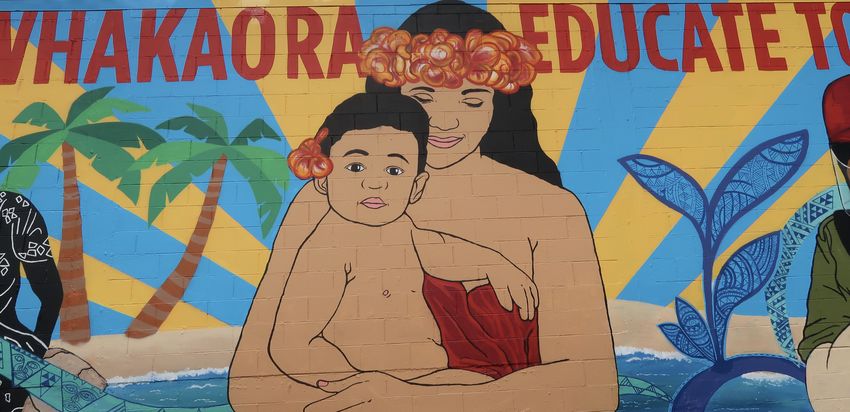Colours of Change: The Panthers Mural Unveiled

The completion of the vibrant Pathers mural project is completed, and adds colour to the streets of Auckland. The artwork was revealed to mark the 50th Anniversary of the Polynesian Panthers.
The Whakaako Kia Whakaora / Educate to Liberate mural that was completed last week honours the historical presence of the Polynesian Panthers in Tāmaki Makaurau. It acknowledges the connection to the Black Panther Party and is a visual representation of the social justice issues both organisations fought for at that time, and still fight for today.
The Mural Project was inspired by Tigilau Ness and Chris McBride’s journey to the Black Panther Party 50th Anniversary celebrations in Oakland California 2016. The politically charged cultural and artistic landscape across Oakland and San Francisco created the seed to bring their stories alive with inspirational messaging. The Panther Mural Project includes artists Huriana Kopeke-Te Aho, Numa McKenzie, Toa Sieke Taihia in collaboration with Emory Douglas, Tigilau Ness and Chris McBride. All of whom collaborated to pull this beautiful piece of inspirational art together. After a whole lot of planning, hard work and fundraising the group finally revealed their labour of love to the world.




Different parts within the mural represent different elements of community justice, care, and liberation.

On the left side of the mural, there is a painting of 3 athletes at the Olympics (two with their fists in the air). This is an image of Tommie Smith and John Carlos during the playing of the US national anthem at the 1968 Mexico Olympics. This part of the mural represents Activism within sports, and how prominent figures in the community have chosen to use their platforms to protest.

Toward the right of the mural, there are images of young people. Children and a teenager are painted side by side playing with blocks, wearing a mask with a message, and holding their fists up. This is a representation of the community and those who are at the grassroots of these liberation movements.

At the center of the mural is a painting of a mother and child that represents Papatūānuku. This part symbolizes Mother Earth and the Environment. A representation of land and ocean, and all those who have worked to protect it.
Although there is a basis to each element of the mural, multiple messages and gems of representation deeper within the art piece can be unpacked. A part of the aim of the mural was to provide positive inspiration for future generations by creating contemporary imagery that will articulate ideas of community care and support, health, cultural diversity, peace, and current environmental values. This can all be seen within the piece.

One of the contributors and artists of the Mural, Numa MacKenzie expressed his pride for what he and the team were able to put together. He expressed “It was an honour to a part of this project and finally put it up. I’ve been a part of other murals but this one is special because we are telling our stories. We get to hear our stories often told in closed rooms but with this mural, we get to see our stories up on display for the whole city to see”.

The mural serves as a reminder of the fight for liberation that has laid the foundation of the lives we live today. In particular, the role played by the Polynesian Panthers in health, housing, land rights, environment, and education issues affecting the Pacific and Māori communities in Tāmaki Makaurau between 1971 and the present. It brings together all the colours of change, both made in the past and yet to be made but is on its way.

The mural can be found and visited on Corner Gundry St & Karangahape Rd.
